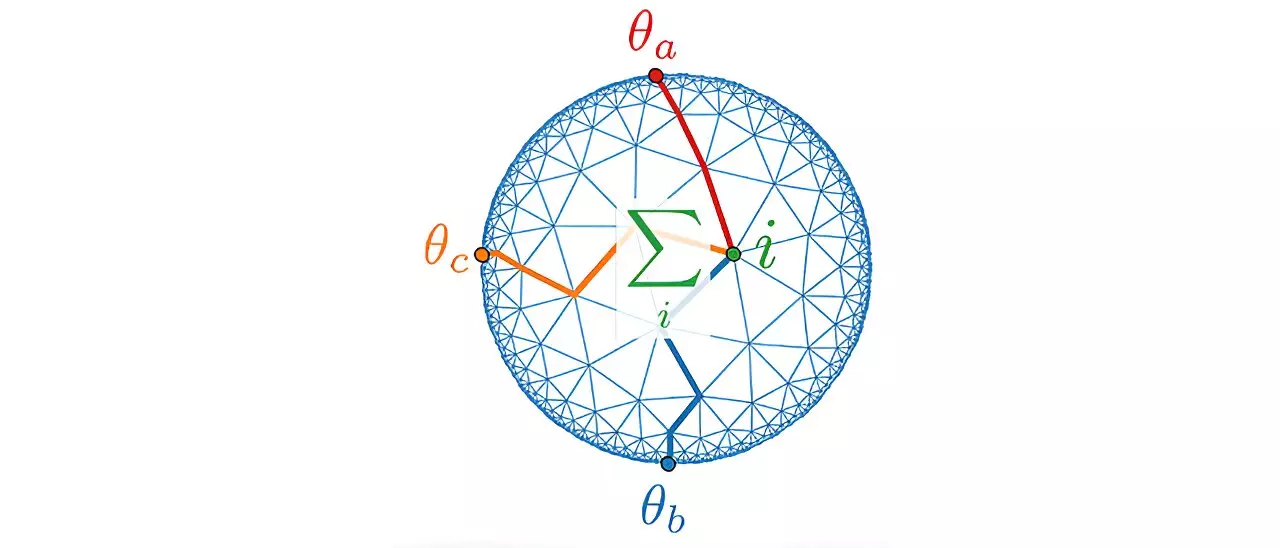Gravity, one of the fundamental forces of nature, has long been a subject of fascination and inquiry for scientists and researchers alike. While much of our understanding of gravity has been developed through classical physics—allowing us to predict celestial movements, understand tidal patterns, and navigate space—the intricate relationship between gravity and the quantum realm remains elusive. This dichotomy presents challenges for physicists who aim to unify theories of large-scale gravitational effects with those governing the behavior of particles at quantum levels.
Professor Johanna Erdmenger, a prominent figure in theoretical physics at the University of Würzburg, emphasizes the necessity of formulating a comprehensive framework that encompasses both realms. She points out that classical theories falter under extreme conditions, like those in black holes or during the Big Bang. It is here that the intersection of classical gravitational theories and quantum mechanics becomes critical, driving the need for a new theoretical paradigm that explains gravity in a fundamentally different manner.
At the forefront of current research into quantum gravity is the AdS/CFT correspondence, a theorized relationship that offers a novel perspective on gravity itself. AdS, or Anti-de-Sitter space, is characterized by its inward curvature, diverging from the familiar flat spaces of classical physics, while CFT, or conformal field theory, provides a framework for understanding quantum systems that maintain invariant properties across different scales.
This correspondence suggests that there’s a profound simplification inherent in how we can study complex gravitational phenomena—essentially positing that gravity in higher-dimensional curved spaces can be analyzed through simpler quantum theories at their boundaries. Imagine viewing a hologram: the full image is derived from seemingly two-dimensional information, highlighting the power of reduced models in capturing more complex truths.
Professor Erdmenger, along with her research team, has made strides in investigating the experimental dimensions of the AdS/CFT theory. By employing a branched electrical circuit designed to simulate curved spacetime, they aim to create an environment where the gravitational dynamics can be mirrored and tested. This innovative experimental framework stands at a crossroads of theoretical physics and practical application, acting as a tangible bridge to the abstractions of quantum gravity.
In their groundbreaking study published in the journal *Physical Review Letters*, Erdmenger’s team presents a methodology to confirm predictions associated with the AdS/CFT correspondence. The branched circuit functions as a laboratory-based analog of curved spacetime, allowing for the observation of electrical signals that represent gravitational interactions in this mimicked environment. The ability to establish this experimental approach marks a pivotal moment in gravitational research.
The findings from preliminary calculations indicate a correlation between the behavior of signals at the circuit’s boundary and the internal dynamics, echoing the foundational principles of the AdS/CFT correspondence. This suggests that the theoretical framework can indeed manifest in practical scenarios, thereby reinforcing its validity and offering a pathway for further exploration.
Implications Beyond Theoretical Physics
The implications of this research extend beyond mere theoretical advancements; they point towards potential technological innovations. Erdmenger anticipates that insights gleaned from these experiments may yield new applications in quantum technology, particularly in the realm of communication. By utilizing circuits that simulate curvature, it may be possible to enhance the efficiency of information transmission, reducing signal loss—a significant step forward in the development of advanced electronic systems.
The pursuit of understanding gravity at both macroscopic and microscopic levels encapsulates a vital area of current research, blending theoretical inquiry with practical application. As scientists like Erdmenger delve deeper into the fabric of the universe, we may be on the cusp of breakthroughs that not only satisfy longstanding scientific questions but also fuel technological advances with far-reaching impacts. The journey from the elegance of mathematical theories to tangible developments in technology exemplifies the beauty and complexity of scientific discovery, reminding us of the intricate connections between theory and reality.

